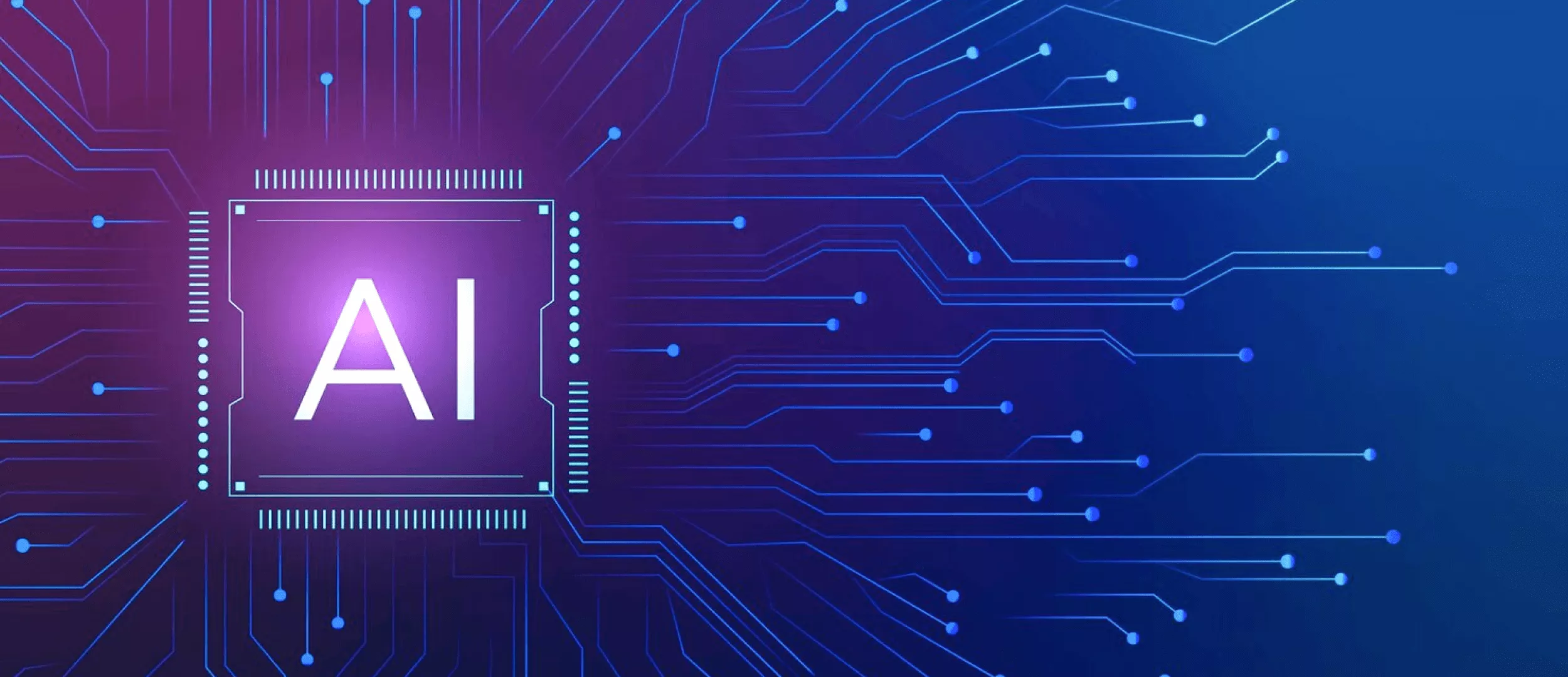
Experts say that the rise of Artificial Intelligence is as important as the invention of the printing press or the first personal computer. It is now a major area in software development with huge growth potential.
Over half of businesses use AI in their operations, and 76% of companies increased their AI investments in 2023. Statista predicts the global market will grow to nearly two trillion USD by 2030, up from 95.6 million USD in 2021.
But how to create AI software? Artificial Intelligence software development is still hard because technology changes so quickly. You can hire experienced vendors to do it for you.
The Stfalcon team has made a guide to show you how to build your own AI software and what steps to take before you start.
What is Artificial Intelligence, and How Does It Work?
Artificial intelligence (AI) allows computers to do tasks usually done by humans.
It is considered smart because it can learn, reason, solve problems, perceive, and use language. Learning is the most known AI trait. Different techniques can teach algorithms to do specific tasks.
Reasoning lets AI make inferences based on situations. While progress has been made, it remains a big challenge since inferences aren't always relevant.
It works by analyzing the current state and the desired goal, identifying obstacles, and overcoming them step by step.
Perception in AI is done through sensors and computer vision, unlike humans who use their senses.
Using language was easier for AI once natural language processing (NLP) was developed. Now, it can understand and respond to human language.
We are just starting with AI, but it already benefits our daily lives. So, how to create artificial intelligence software?
First, you need a lot of data to train AI. Then, you need to process this data using algorithms, which are sets of instructions that tell AI what to do.
The AI workflow has 5 steps:
1. Input: AI needs a lot of training data with defined context and desired outcomes.
2. Processing: AI looks for patterns and interprets the data.
3. Data outcomes: AI predicts success or failure.
4. Adjustments: If AI predicts failure, it learns from mistakes and tries again.
5. Assessments: AI analyzes the data and makes predictions.
Different AI learning methods use technologies like machine learning, neural networks, deep learning, NLP, and computer vision.
Want a web app that does more?
Let's build a solution that's smart, sleek, and powerful.
Alina
Client Manager

Why is AI Software Worth Investing In?
Here are the top three reasons why building AI software is a great opportunity for tech startup founders and software product companies:
- It creates more value for users.
- It helps you stay competitive in the market.
- It leads to higher profits.
Statistics show promising numbers for those wanting to develop AI software. According to Accenture, AI could double the economic growth rate of some developed countries by 2035. The global AI software market is expected to reach $126 billion by 2025.
AI algorithms process large amounts of data very fast and accurately. For example, AI-powered chatbots handle customer inquiries 24/7, freeing up human resources for complex tasks. AI software analyzes customer behavior, predicts sales trends, and automates marketing campaigns.
With these benefits, investing in Artificial Intelligence software development is a smart move for any startup looking to gain a competitive edge.
What is Artificial Intelligence Software
Understanding "What is Artificial Intelligence software?" can help you understand its role in various sectors. AI software is a computer program that can learn, make decisions, and solve problems. AI teaches computers human-like tasks. It includes neural networks and machine learning, which learn from data. Deep learning is a form of machine learning. It aids in recognizing patterns. The MIT Technology Review states that deep learning software mimics the brain's neurons. It is used to identify patterns in sounds, images, and other data. Companies then use AI to run their businesses better. It also helps them find areas to improve. This, in turn, leads to better human resource allocation. It lets people focus on more strategic and rewarding tasks.
How To Build AI Software: 6 Steps
Now, let's discuss how to build Artificial Intelligence software. The process is similar to developing any software application but includes some extra steps.
Identify the problem you want to solve with AI
The first step in developing AI software is to identify the specific problem you want to solve. It's about more than just having a great idea; you need to understand the details of the problem and how AI can address it.
This step is crucial. It helps determine the type of AI you'll need. It could be machine learning, natural language processing, or computer vision.
In the discovery phase of AI software development, the main goal is understanding the problem. The aim is to set clear objectives. This involves gathering input, analyzing data, and selecting the right technology. A prototype is developed to validate the approach, and potential risks are identified and addressed. Finally, a detailed project plan is created to guide the development process.
Gather data
To make software for Artificial Intelligence, the next step is getting data. Data is like fuel - it powers its learning and decision-making. But not just any data will do. It has to be right - meaning it's relevant, comprehensive, and unbiased. There are two types of data: structured and unstructured. Structured data is organized neatly, like in a spreadsheet, making it easy to use. Unstructured data is messy, like transcripts from customer service calls, but still valuable. Getting the right data is crucial for your AI tool to work effectively.
Once you've gathered data, the next step is preparing it for your AI tool. This involves cleaning, sorting, and organizing the data so it's ready to be fed into the AI system. Cleaning the data means removing any errors, duplicates, or irrelevant information. Sorting and organizing the data help make it easier for the tool to understand and analyze. Think of it like preparing ingredients before cooking a meal - you want everything clean, chopped, and ready to go.
After preparing the data, the final step is feeding it into your AI tool and training it. This is where the magic happens. The tool uses the data to learn patterns, make predictions, and perform tasks. It's like teaching a child - you show them examples, correct their mistakes, and gradually they learn. The more data you feed into your tool, the smarter it becomes. With enough training, it can start making predictions and decisions on its own, helping you solve problems and make better decisions in your business or project.
Choose an AI technology
After getting the data, you have to pick the AI tech that fits you best. There are loads out there, like machine learning, speech recognition, and natural language processing, just to name a few.
- Machine learning (ML) is a part of artificial intelligence that's all about teaching computers to learn from data. These smart algorithms analyze historical data to spot patterns and relationships. They can predict outcomes, classify info, group data, and even create new content, like ChatGPT and GitHub Copilot.
- Speech recognition, also known as ASR or speech-to-text, lets computers turn speech into text. It processes audio, making it easier to interact with devices using voice commands or dictation. First, it captures audio. Then, it enhances the signal. After that, it picks out speech traits and converts them to text. Advanced algorithms and machine learning are used for accurate transcription. This improves accessibility and usability in many fields.
- Natural Language Processing (NLP) is a crucial part of AI. It makes computers understand, interpret, and use human language. This field is vital for applications like virtual assistants and translation services. NLP analyzes and responds to text and speech data. The NLP process has key steps. These include preparing text, breaking it into parts, and analyzing its meaning. Through these steps, computers can translate languages, analyze emotions, and extract information. NLP finds use in many industries. It automates tasks, boosts efficiency, and improves user experiences in fields like healthcare and finance.
Model Learning
To build and train your AI model, you don't necessarily have to write code yourself. There are user-friendly platforms known as no-code platforms that simplify the process.
These platforms handle your data and train your model. Popular no-code AI platforms include Google Cloud AutoML, Amazon SageMaker, and Microsoft Azure Machine Learning. They offer simple interfaces for tasks like image and text classification and natural language processing.
You can also use visual programming languages. They let you build AI models by dragging and dropping code blocks. This method is easy and doesn't need coding skills, making it accessible to more users.
Modeling
At this stage, engineers leverage previously gathered data to train machine learning (ML) models using a variety of methods. For instance, to employ deep learning and reinforcement learning techniques for this purpose. These methods involve feeding the ML models with vast amounts of data to enable them to learn and improve their performance over time. Deep learning trains neural networks with layers to spot patterns and predict them. Reinforcement learning focuses on teaching models to decide. They get rewards for the right actions and penalties for the wrong ones. Engineers use these to build models. The goal is to analyze data, predict, and solve problems in various fields.
Testing and Deployment
After training the model, we check its performance. Then, we should decide between deployment or further training. Alternatively, we can deploy the model and keep improving it. In development and support, we can boost performance, add features, and adapt to new operating systems. This process ensures the AI stays effective, efficient, and meets user and tech needs.
The Main Problems of Artificial Intelligence in Software Development
Artificial Intelligence software development brings many benefits, but it also presents several challenges. Here are some common hurdles faced during AI software development:
Understanding Code
AI can generate code, but it often doesn't fully understand the nuances of what it's creating. This can lead to bugs and security issues, as well as problems with scalability and adaptability in the future.
Data Compliance Challenges
Ensuring the data used for Artificial Intelligence training is of high quality and complies with industry regulations is a significant challenge. Data must be accessible, well-governed, and secure to be effectively used in AI models.
Ethical and Legal Matters
Using AI in fields like banking and healthcare raises ethical and legal issues. These include privacy, bias, and transparency. It's crucial to manage these well to prevent harm.
Accuracy and Reliability
AI can sometimes make mistakes or mislead. Human oversight is key to fixing errors and ensuring AI is trustworthy.
Attracting and Retaining Talent
Hiring and keeping skilled AI staff is tough. High demand makes it hard for companies to find the right people for advanced AI.
Overcoming these challenges needs careful planning, strong ethical rules, and a skilled team. This team ensures AI solutions are reliable and effective.
Technology Tips for Artificial Intelligence Software Development
Below, you'll find tips that have a significant impact on the success and effectiveness of AI solutions.
Tip #1: Use Machine Learning to Train Your System
Machine learning is essential for building software for Artificial Intelligence. It helps create systems that learn and improve over time. Start with clean, well-structured data, as the quality of your data directly affects your AI's performance. Make sure your data is accurate and relevant to your goals, and avoid biases by ensuring your training data reflects real-world scenarios. Regularly update your model with fresh data to keep it accurate and relevant.
Tip #2: Develop Post-Processing Scripts
Create scripts to automatically fix common errors in the model's output. For example, if your model generates code, a script can check for and correct unbalanced braces or missing quotes. This helps ensure the output is correct and usable.
Tip #3: Validate and Repair
Use JSON validation libraries available in most programming languages to check the output for errors. If errors are found, apply automated repair strategies. If the JSON can't be repaired, have a mechanism to handle these cases, such as retrying the model or providing a default response.
Tip #4: Fine-Tune Your Model
Consider fine-tuning your model on tasks involving specific outputs, like generating JSON responses. This helps the model become better at producing valid and accurate results, improving overall performance.
Use Cases of AI Integration Software
If you're thinking about the question "How do I build AI software?", the first question to address is "What kind of AI software should I build?". If you're looking to start a project but are stuck for ideas, take a look at these fresh concepts:
An AI-powered mental health support app: The app can offer personalized mental health support. It does this by analyzing user data. It then provides customized advice, relaxation exercises, and coping strategies. It can also connect users with mental health professionals if needed.
An app for personalized nutrition based on artificial intelligence: Eating habits are personal. AI can customize these habits. For example, an AI app collects data on health, lifestyle, and tastes. Then, it creates personalized meal plans.
An AI-based financial planning and investment app: Financial technology is promising, and ML can enhance it by offering personalized investment advice through an app.
AI-powered event planning app: Event planning can be a very complex task, but AI can simplify the process. An AI-powered app can involve venues, caterers, and vendors. It can create schedules, send invitations, and manage RSVPs.
AI-powered travel planner: An app that customizes travel plans based on your preferences, budget, and interests. It suggests destinations, activities, lodging, and creates detailed itineraries for you.
The Future of AI Software Development
Artificial intelligence is already transforming how we live and work, and this trend is only going to speed up. According to Grand View Research, the global AI market is expected to grow by 37.3% from 2023 to 2030 and reach $1,811 billion. The healthcare and finance industries are predicted to be major drivers of AI adoption in the coming years.
AI technology is advancing rapidly with new developments in machine learning, natural language processing, and computer vision. As technology continues improving, we expect to see more sophisticated and powerful AI software that can solve even more complex problems.
The future of AI software development is full of potential, promising to streamline processes, improve software quality, and enhance user experiences. As AI becomes more integrated into development workflows, it's important to tackle challenges like bias, job displacement, and ethical concerns.
Conclusion
We've covered the basics of creating AI software, but it's a vast field with many complexities.
If you're looking to integrate AI into your business, it's best to seek professional help. An experienced AI-focused development company can create an efficient solution, save resources, and meet your customer needs. Take the first step towards AI-driven success by contacting our expert team today.
Now let's move on to the FAQ section to clarify the details.
FAQs About Building Artificial Intelligence Software
What is artificial intelligence (AI) software?
AI software is a computer program that can do complex tasks like learning, decision-making, and solving problems. It uses machine learning to mimic human intelligence, allowing it to handle tasks with more detail and understanding.
What are the benefits of building AI software?
AI software makes user experiences better by creating personalized and adaptive interfaces. Machine learning (ML) algorithms study user behavior, helping developers customize interfaces to individual preferences. This leads to smoother, more personalized interactions and increases user satisfaction and engagement. AI tools also boost software reliability and performance through predictive analysis. By examining historical data, AI can predict potential issues, enabling developers to address them in advance. This reduces post-release problems and enhances security.
How much does it cost to build AI software?
Developing AI software can be expensive, and costs vary based on requirements. On average, AI software development can cost up to $400,000. This is just an estimate; the actual cost depends on the project's specifics. Small-scale AI Project costs range from $10,000 to $100,000 and Medium-scale - from $100,000 to $500,000.



